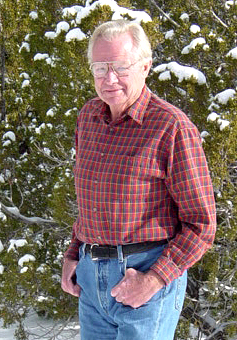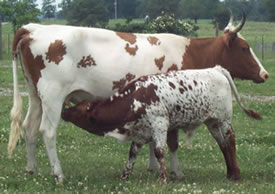
 Retired National Park Service naturalist, writer-photographer on natural history topics, and University of New Mexico Professor, William W. Dunmire, recently wrote a fascinating article in the Historical Society of New Mexico’s publication La Crónica de Nuevo México about the impact of the Spanish moving into the state. As soldiers and then settlers arrived they bought herds of horses, cattle, goats and sheep that dramatically changed both the land and the way of life.
Retired National Park Service naturalist, writer-photographer on natural history topics, and University of New Mexico Professor, William W. Dunmire, recently wrote a fascinating article in the Historical Society of New Mexico’s publication La Crónica de Nuevo México about the impact of the Spanish moving into the state. As soldiers and then settlers arrived they bought herds of horses, cattle, goats and sheep that dramatically changed both the land and the way of life.
Although there were horses in North America, around 8000 BC they had become extinct. From the article, in 1508 “Perhaps twelve-hundred horses and mules made the seven-hundred mile journey that led to the founding of Nuevo Mexico’s first Spanish colony of San Gabriel at the place where the Rio Grande intersects with the Rio Chama north of present-day Española…..
“In the 1600s New Mexico’s far-flung missions needed horses and mules for efficient farm and ranch operation. Friars couldn’t possibly do all the necessary riding so teaching horsemanship to Puebloan converts must have been a priority, regardless that Indian ownership of horses was discouraged, if not forbidden. Soon enough, though, a horse would stray from its mission settlement and become semi-wild, only to be recaptured and secretly retained by a Puebloan.”
When the Spanish returned after being forced out by an Indian revolt in 1680 “the non-farming nomadic tribes, including the Navajos and Apaches, had acquired horses.” Some of that original Colonial Spanish horse stock still runs wild today in New Mexico, mostly on Indian reservations.
 “Once longhorn cattle reached the Mexican mainland they reproduced slowly at first, but as conquest and colonization surged, environmental conditions to the north favored the expansion of the herds, and the concept of the estancia was born wherein privately owned livestock ranches were acquired through formal government grants…..
“Once longhorn cattle reached the Mexican mainland they reproduced slowly at first, but as conquest and colonization surged, environmental conditions to the north favored the expansion of the herds, and the concept of the estancia was born wherein privately owned livestock ranches were acquired through formal government grants…..
“Most of the hundreds of cattle trailed to the new colony ended up being slaughtered for the table: nevertheless, enough survived to breed. So when Franciscans fanned out to establish their network of missions, they always took at least a few cows and a bull or two. Yet Hispanic New Mexico never became a primary cattle ranching center during colonial times. This may have been because Puebloans strongly objected to range animals trampling their irrigated fields and to the fact that sheep-raising had become the preferred pursuit…..
“Herding open-range cattle by men on horseback seems to have gotten its start in the mid-1500s, not in Europe, but in Pánuco, midway up the eastern coat of Mexico. Then the practice spread to Texas where horse-driven cattle ranching would one day become an institution.”
I highly recommend the entire article. You can get a copy of the publication by contacting the Historical Society of New Mexico. And thanks to Professor Dunmire for allowing me permission to quote his writing.
